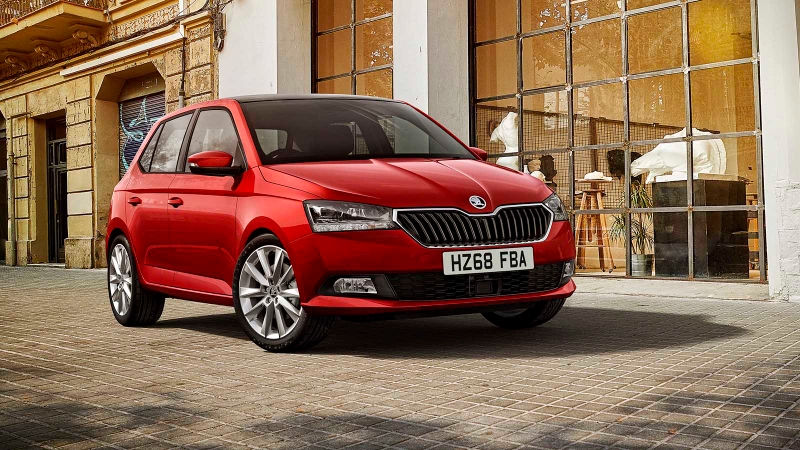
Fiat 500 engines, driving and performance
Gallery
How does the Fiat 500 drive?
Stick to the Fiat 500’s natural stomping ground – the city – and it feels entirely at home. The light steering, easy gear shift and intuitive clutch make the car easy to drive, while the small dimensions and good visibility also means it’s easy to place on the road. You can press the ‘City’ button on all 500s to make the steering super light, allowing you to twiddle the wheel into a parking space with just a single finger.
On the motorway and faster roads, however, some weaknesses start to show up. Bouncy suspension means the 500 doesn’t feel as composed as a Hyundai i10. Plus, there’s more body roll than you’ll find in a Volkswagen Up, for example. It never feels wayward or uncontrolled, but it lacks the driving sparkle you’ll find from some rivals.
Is the Fiat 500 comfortable?
The 500 is never harsh enough that you could call it ‘uncomfortable’, but it’s not as sophisticated over bumps as cars like the Hyundai i10. Larger impacts beat the suspension’s reaction time and are transmitted through the base of your seat, before the springs catch up and bounce you back the other way in response. This is much more noticeable at higher speeds, though, so won’t bother you much if you mainly drive at city speeds.
Refinement is, like the ride quality, better when the car’s moving slower. There’s a decent amount of engine noise regardless of which model you get, and it’s especially noticeable on two-cylinder TwinAir cars, which are quite raspy when you put your foot down. Wind noise is also fairly prominent at motorway speeds, especially around the windscreen. Again, this will rarely bother you in the city, but the likes of the Toyota Aygo are a little more hushed on longer drives.
What’s the best Fiat 500 engine to get?
If you’re shopping nearly new and lightly used Fiat 500 cars, you’ll find three petrol engine choices.
The lineup starts with a 1.2-litre four cylinder – this 69hp unit is affordable to buy and should return low fuel and maintenance costs. It’s well suited to town driving but does feel a little sluggish once out on faster roads, so you’ll probably have to change gears quite often to keep up with fast traffic or crest steep hills.
Less common is the 0.9-litre TwinAir petrol. This is a turbocharged two-cylinder engine that sounds a little like a motorbike when you put the hammer down. Thanks to the turbo, it has quite a lot more grunt than the 1.2-litre model, so feels more relaxed at higher speeds, further aided by its standard six-speed gearbox instead of the 1.2’s five speed. It is noisy, however, so make sure you find its buzziness charming rather than annoying before choosing this version.
2020 saw the introduction of a new 1.0-litre, three-cylinder engine. Its ‘Hybrid’ badging might have you thinking this is a fuel-sipping car that rarely needs to be filled up, but this is simply a mild-hybrid setup to save fuel. The motor provides extra power when accelerating or when waiting for the engine to start up again but can’t truly drive the car on electric power alone. Regardless of the technical details, this engine is a good match to the 500. Its 70hp output means it’s no faster than the 1.2-litre version on paper, but the 1.0-litre unit feels a little more responsive thanks to its standard-fit six-speed gearbox.
Fiat 500 performance
If you’re remotely interested in performance, the Fiat 500 probably isn’t the car for you – an Abarth 595 will be much further up your street. None of the 500’s engines are fast, with most taking well over 10 seconds to get from 0-62mph. Both the 1.2-litre petrol and the 1.0-litre mild-hybrid will feel a bit underpowered if you’re a regular in the outside lane of the motorway, although the latter is a better long-distance choice thanks to its six-speed gearbox.
The closest you’ll get to ‘performance’ in the 500 is with the TwinAir 0.9-litre turbocharged two-cylinder engine. This version is quite raucous when you accelerate, sounding a little like you have a Vespa trapped under the bonnet, but that also makes it easily the most characterful engine in the 500 lineup. Most TwinAirs have 85hp for fairly punchy acceleration but some earlier versions had a 105hp option – these still don’t feel ‘fast’, but they’re certainly the most eager to speed up once the turbo kicks in.


















































